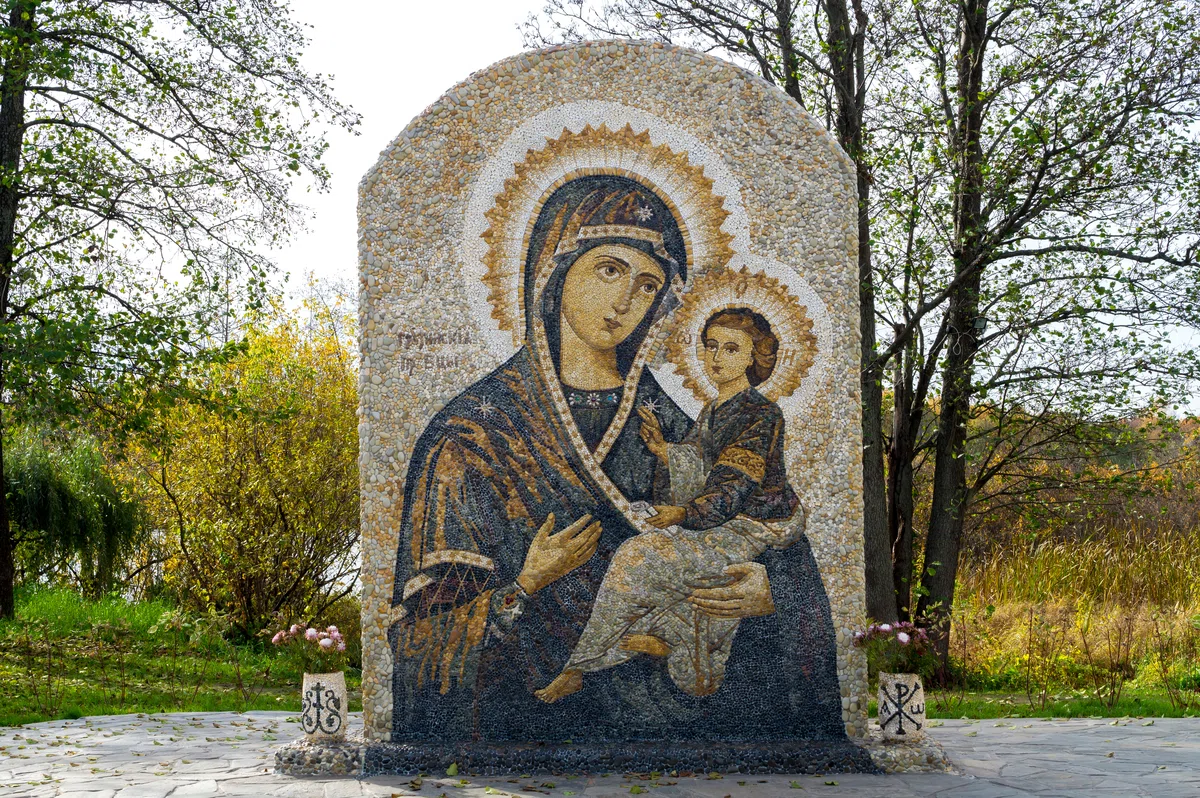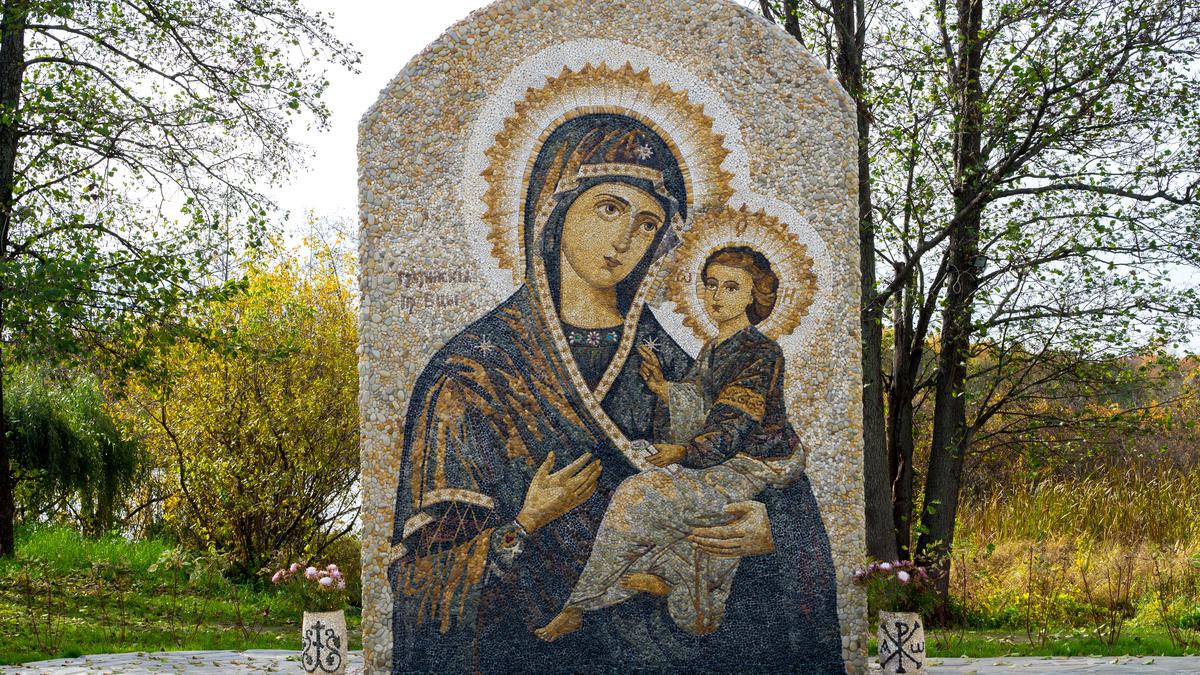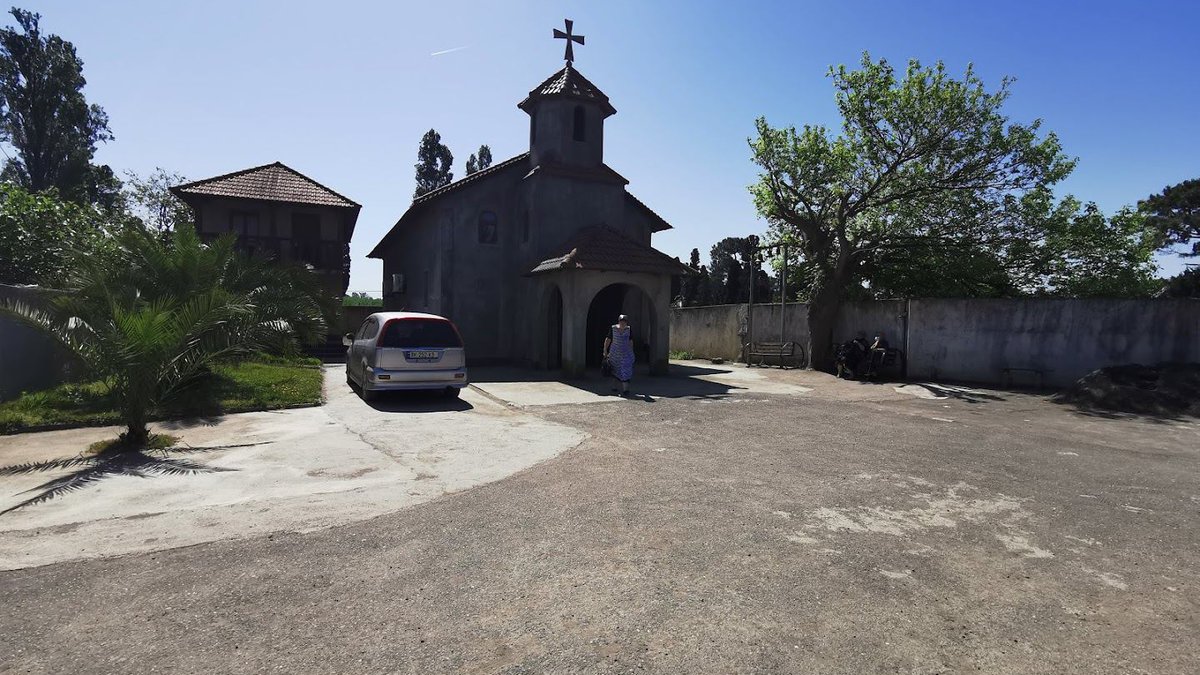
The icon of the Georgian Mother of God: what they pray for, what helps. Miracles, history and description of the icon.
Miracles and history of the icon of the Georgian Mother of God: it helps to heal everyone who believes in God. Women who have lost hope that they will become mothers pray to her, just like cancer patients. A man with a fatal disease prayed to the Mother of God with the last of his strength and was healed.
Miracles of the Icon of the Georgian Mother of God⬇️
Many icon painters created lists and sketches of the famous icon depicting the Virgin Mary and the baby Jesus. The total number reaches over seven hundred creations.
As you know, Christianity is practiced in Georgia. Georgian Orthodox Church It is one of the oldest in the Christian world. On the territory of the country there is its own icon depicting the holy mother and son. It is called the icon of the Georgian Mother of God. This icon is very popular not only in Georgia, but also abroad. Temples are named after her, people offer their prayers to her, sing about her in hymns. Every Christian sincerely believes in her miraculous abilities.
Officially, the celebration in honor of the icon of the Georgian Mother of God takes place on August 22 according to the old style or on September 4 according to the new one. The date was not chosen by chance — it was on this day that the icon was placed in the Montenegrin monastery. The veneration of the Virgin by Orthodox Christians is a long and glorious tradition of believers.
The history of the Icon of the Georgian Mother of God
The icon has come a long way before taking its place in the Krasnogorsk monastery.
In 1622, when Georgia was defeated by Shah Abbas, the icon was taken to Persia. A few years later, it was acquired by the clerk of the Yaroslavl merchant Grigory Lytkin, Stefan Lazarev. And only in 1629, when the clerk Stefan returned to Yaroslavl, the merchant Lytkin sent the icon along the Pinega River to Arkhangelsk, to the Montenegrin Monastery, today better known as the Krasnogorsk Monastery. After the icon of the Virgin was placed in the monastery, people began to notice quite unusual phenomena happening around the icon. For example, the monk Pitirim, who served at the monastery, suddenly saw the light and found hearing.
In 1654, the icon was transported to Moscow for renovation and production of a new salary. At that time, Russia was gripped by one of the most terrible diseases — the plague, and while the image was in Moscow, a number of healings were prescribed for her. One of those who was healed was the son of the craftsman Gabriel Evdokimov. He instructed to write a copy of the icon, which was then placed in the church on Glinishchi, located in Nikitnikov Lane. Although it was not the original, but a copy of the icon also performed various miracles and helped the residents of the city in curing various diseases.
When the Krasnogorsk Monastery was closed in 1920, no one knew where the icon was located. In 1946, the monastery became operational again and the icon of the Georgian Mother of God appeared in it again. The last documented information about the icon's location testifies to its participation in the procession in Arkhangelsk.
Icon Description
It is worth explaining that, from the point of view of Christianity, the saints depicted on the icons are considered guides from the earthly world to the heavenly one. When a person prays to an icon, he turns directly to the one who is depicted on it. Iconography is a gift available exclusively to a devout, sincerely believing in God, person. There is an opinion that if a person managed to paint an icon of a saint, a blessing from above descended on him. When writing Orthodox icons, a number of strict canons are observed. They appeared at the moment when the apostle Luke painted the first icon.
Consider the icon of the Georgian Mother of God. It depicts the Blessed Virgin Mary, who acts as a guide for Christians to God, and her grown-up son Jesus, who sits on her lap. The Mother of God appears before us to the waist, her head is tilted and slightly turned towards her son. With one hand she supports him, and with the other hand she points upwards. It is believed that it points to God, reminding us that we need to be closer to him. And this can be achieved only by a righteous life and purification from earthly sins. Another version tells that with her gesture, the Most Holy Mary points to Jesus, who is the savior of mankind.
An important feature of this icon is the way of depicting the pattern on a long veil falling from the head of the Mother of God, which leaves open the triangle of the blue chiton and the lapels of the cape. Christ holds his right hand as if he blesses all those who come to him. In his other hand he has a scroll, which is a symbol of the Old Testament. Another distinctive feature of the icon is the image of the right leg of Jesus, which is turned with the bare foot outward.

Creating lists from an icon
The main sample of the image of the Georgian Mother of God, from which many copies were written, was created at the beginning of the XVIII century by the Kremlin iconographer Kirill Ulanov. He carefully measured and copied the image of the Blessed Virgin Mary and her son Jesus.
Today we can find copies of the ancient image in many Moscow churches and temples, for example, in the Alekseevsky Convent on Prechistenka. The appearance of the icon in it has an unusual history.
One nun, who was in a difficult situation, persistently asked for an icon of the Mother of God to be brought to her. One night she had a prophetic dream in which she was informed that the list of the miraculous icon was kept somewhere within the walls of the monastery. The search was successful. The image of the Virgin was found in the wall, in the sacristy.
In 1661, the miraculous icon from Kazan came to the Raifa Bogoroditskaya desert. There, Metropolitan Lawrence commissioned the renowned icon painter to create a copy of the miraculous image. When the list was ready, a church was built especially for him. The miracles of the icon were not long in coming. She absolutely magically acted on the lame and the insane, blind people began to see. To this day, many believers come to the Raifa Monastery with the hope of a cure.
Two more valuable copies are kept in the Church of Martin the Confessor and in the Ostankino Church of the Life-Giving Trinity. In the XVIII century Paraskeva Fedorovna ordered the production of a precious kiosk for an icon located in the church of Martin the Confessor. And in the Ostankino Church there is a curious history of the appearance of this icon. The Virgin Mary appeared in a dream to the owner of the copy and herself pointed out the location of the icon.
During the restoration, miraculously, the image of the shrine spontaneously recovered. This shocked people, and became another miracle in the history of the icon.
Active temples
Churches named after the icon of the Georgian Mother of God have been erected all over the world, in cities, villages and villages.
In the fifties of the XIX century, for the veneration of this image, the Raifa temple was erected within the limits of the Theotokos monastery. The beauty of the church, the peaceful atmosphere and the unique energy of the ancient icons delight believers and attract many tourists to the temple. The functioning church of the Georgian Icon of the Mother of God is located in the village of Yakshino. It was built in the XVIII century, but, unfortunately, during the reign of the Soviet government it was destroyed. At the end of the nineties of the last century, large-scale work began on the restoration of the church.
Even foreign investors helped, and thanks to them, church services were resumed already in 2004. Churches and chapels in honor of the remarkable image exist in many Russian regions: in the Chuvash Republic, in the Republic of Tatarstan, in the Tver, Ryazan and Kaluga regions. The village of Vasilyevskoye (Shuisky district) was once famous for an ancient temple, which later fell into desolation. Now the ancient iconostases of this church are kept in the Tretyakov Gallery and the Russian Museum.

What is asked in the prayers addressed to the Mother of God
The icon is still able to grant healing to a person today. The appeal to the venerated lists of the Most Holy Mother of God of Georgia helps to heal everyone who believes in God. Many people who are sick with oncological diseases pray to her. There is a belief that it can help with various epidemics, stomach diseases, including ulcers, deafness and blindness, toothaches, infertility, tormenting mental illnesses and obsessions.
Women who have lost hope of becoming a mother feel a special awe, and their prayers, if they come from a pure heart, often help them find long-awaited happiness. You can prayerfully address the icon in your own words, it is important that they are sincere. There were cases when a person, being sick with a fatal disease, who had lost hope of recovery, found the last strength in himself to pray to this icon, and after a while he was miraculously healed.
For more information about all the religious sites and historical values of Georgia, read the articles and reviews in the Madloba catalog. We try to tell about everything that is important for the Georgian people in a simple and interesting way.












29 comments
Log in to leave a comment
А весь мир — иконостас,
Эти горы и раздолья
Осветил Господь для нас."
Чудеса иконы Богородицы случались и в моей жизни. Верьте в Бога искренне от всей души. Бог поможет вам. Спасибо автору за ознакомительную статью.